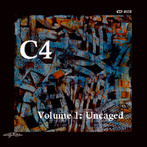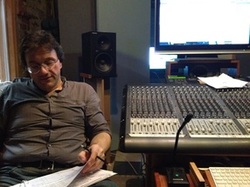C4's Debut Album
Volume 1: Uncaged
"This is, quite simply, an amazing and excellent disc, featuring six new choral works conducted by various members of the group."
"All of this music is interesting, well written, and exceptionally performed by this talented chorus. One of their chief virtues is that they do not produce a homogenous blend, but rather reveal a transparency which opens up the various lines of the music for the listener."
"I found this disc so stunning and enjoyable ... a superb CD and highly recommended."
Lynn René Bayley , Fanfare Magazine
"All of this music is interesting, well written, and exceptionally performed by this talented chorus. One of their chief virtues is that they do not produce a homogenous blend, but rather reveal a transparency which opens up the various lines of the music for the listener."
"I found this disc so stunning and enjoyable ... a superb CD and highly recommended."
Lynn René Bayley , Fanfare Magazine
C4 in the Studio
C4 Volume 1: Uncaged was recorded at Peter Karl Studio at the Gowanus Arts Exchange in Brooklyn. The 4 intensive days of sessions, followed by many hours of editing and mixing, were led by our producer, James Bassi and recording engineer, Peter Karl. The album was released at our June 11, 2013 Concert which featured all six of the CD tracks.
Uncaged is a Fortay Records Release, CD 4038 |
C4 Volume 1: Uncaged
|
Please Note: The complete tracks for all works on our CD are available for listening on the C4 YouTube Channel.
We hope you'll support C4 further by purchasing tracks or the complete album here.
The Music on C4 Volume 1: Uncaged (in order of appearance on the CD)
The Caged Skylark by Hayes Biggs
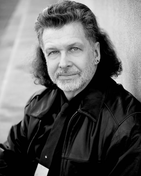
Photo: Aestheticize Media
My setting of Gerard Manley Hopkins’s The Caged Skylark was begun in the spring of 2011 and completed in August of the same year. The piece is dedicated to Gregg Smith, in honor of his eightieth birthday and with deepest thanks for his unflagging commitment to and support of American composers over the past several decades.
Hopkins (1844-1889), besides being possessed of a vision that made much of twentieth-century English poetry possible, was a convert to Roman Catholicism and a Jesuit priest. The Caged Skylark begins darkly, its first two stanzas juxtaposing the image of the brave, “dare-gale” skylark chafing against the confines of his “dull cage,” with the workaday drudgery of humans, imprisoned in their own earthly bodies. My setting begins with a duet for the sopranos and altos that seems to suggest the aimlessness of the bird in his futile struggle against his incarceration, culminating in chordal “bursts of fear or rage” in the full choir, with the altos hanging on stubbornly after the other voices have abruptly been cut off.
Hopkins changes the affect completely for the last two stanzas. The skylark, even when flying free and high, still needs a resting place, a “wild nest” to which he can rapidly descend at will from the heights. Likewise, humans freed—in Hopkins’s view—by the fact of Christ’s resurrection still require their own dwellings, but their bodies are now transformed into something much lighter, no more an encumbrance than would be a rainbow alighting upon a meadow. From a musical standpoint, my interpretation of the second half of the poem takes on a decidedly more tonal cast, but it is a tonality hard won and not without ambivalence.
See more on Hayes Biggs here.
Text of The Caged Skylark
As a dare-gale skylark scanted in a dull cage
Man’s mounting spirit in his bone-house, mean house, dwells–
That bird beyond the remembering his free fells;
This in drudgery, day-labouring-out life’s age.
Though aloft on turf or perch or poor low stage,
Both sing sometimes the sweetest, sweetest spells,
Yet both droop deadly sometimes in their cells
Or wring their barriers in bursts of fear or rage.
Not that the sweet-fowl, song-fowl, needs no rest–
Why, hear him, hear him babble and drop down to his nest,
But his own nest, wild nest, no prison.
Man’s spirit will be flesh-bound when found at best,
But uncumbered: meadow-down is not distressed
For a rainbow footing it nor he for his bones risen.
~Gerard Manley Hopkins
Hopkins (1844-1889), besides being possessed of a vision that made much of twentieth-century English poetry possible, was a convert to Roman Catholicism and a Jesuit priest. The Caged Skylark begins darkly, its first two stanzas juxtaposing the image of the brave, “dare-gale” skylark chafing against the confines of his “dull cage,” with the workaday drudgery of humans, imprisoned in their own earthly bodies. My setting begins with a duet for the sopranos and altos that seems to suggest the aimlessness of the bird in his futile struggle against his incarceration, culminating in chordal “bursts of fear or rage” in the full choir, with the altos hanging on stubbornly after the other voices have abruptly been cut off.
Hopkins changes the affect completely for the last two stanzas. The skylark, even when flying free and high, still needs a resting place, a “wild nest” to which he can rapidly descend at will from the heights. Likewise, humans freed—in Hopkins’s view—by the fact of Christ’s resurrection still require their own dwellings, but their bodies are now transformed into something much lighter, no more an encumbrance than would be a rainbow alighting upon a meadow. From a musical standpoint, my interpretation of the second half of the poem takes on a decidedly more tonal cast, but it is a tonality hard won and not without ambivalence.
See more on Hayes Biggs here.
Text of The Caged Skylark
As a dare-gale skylark scanted in a dull cage
Man’s mounting spirit in his bone-house, mean house, dwells–
That bird beyond the remembering his free fells;
This in drudgery, day-labouring-out life’s age.
Though aloft on turf or perch or poor low stage,
Both sing sometimes the sweetest, sweetest spells,
Yet both droop deadly sometimes in their cells
Or wring their barriers in bursts of fear or rage.
Not that the sweet-fowl, song-fowl, needs no rest–
Why, hear him, hear him babble and drop down to his nest,
But his own nest, wild nest, no prison.
Man’s spirit will be flesh-bound when found at best,
But uncumbered: meadow-down is not distressed
For a rainbow footing it nor he for his bones risen.
~Gerard Manley Hopkins
Stabat Mater by Jonathan David
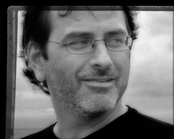
I set 8 of the 20 verses of the original text. They were chosen for their focus of intense empathy for the mourning Mother at the cross. The driving musical force behind my work is the appoggiatura, an accented grace note. I’ve interpreted it here as a “sighing” figure in somewhat the manner of madrigal tone painting. When used maximally, it transforms into more of a sob and pierces the texture with profound sorrow.
I’ve also made considerable use of silence, primarily in the introduction, where it underlines the “stunned” stage of mourning. The futility of speech is also conveyed in the splitting up of words among different voice parts.
The original plainchant melody, which appears at 5 points during the piece, proceeds here uninterrupted, as a voice from the ether, but the words of those still on earth are as broken as they themselves are. I wanted to avoid the reflexive option of a grand apotheosis at the climactic “paradisi gloria”. These last two words of the piece never rise above mp and gradually fade away to ppp at the end. The effect aimed for is uplift by way of “lightness”, as a balloon drifting up and off into the heavens. Paradise may be glorious but is also a leave-taking.
The work was Commissioned by the Carroll University Concert Choir, Music Director Kristina Boerger, as a gift to the people of Todi, Italy, burial place of Frater Jacopone (ca. 1230-1306), author of the “Stabat mater dolorosa” text. It was premiered in April 2012 in Waukesha, WI, with a subsequent tour of Italy in May.
See more on Jonathan David here.
Text of Stabat Mater
Stabat Mater dolorosa The grieving Mother stood weeping
Iuxta crucem lacrimosa beside the cross where her
Dum pendebat Filius Son was hanging
Cuius animam gementem Through her weeping soul,
Contristatam et dolentem compassionate and grieving,
Pertransivit gladius a sword passed.
Quis est homo qui non fleret, Who is the person
Matrem Christi si videret who would not weep seeing
In tanto supplicio? the Mother of Christ in such agony?
Quis non posset contristari, Who would not be able to feel
Christi Matrem contemplari compassion on beholding Christ’s
Dolentem cum Filio? Mother suffering with her Son?
Eia Mater, fons amoris O Mother, fountain of love,
Me sentire vim doloris make me feel the power of sorrow,
Fac, ut tecum lugeam that I may grieve with you.
Fac, ut ardeat cor meum Grant that my heart may burn
In amando Christum Deum in the love of Christ my Lord,
Ut sibi complaceam that I may greatly please Him.
Christe, cum sit hinc exire, Christ, when it is time to pass away,
Da per Matrem me venire grant that through your Mother
Ad palmam victoriae I may come to the palm of victory
Quando corpus morietur, When my body dies,
Fac, ut animae donetur grant that to my soul
Paradisi gloria. is given the glory of paradise.
~Frater Jacopone da Todi (ca. 1230-1306)
I’ve also made considerable use of silence, primarily in the introduction, where it underlines the “stunned” stage of mourning. The futility of speech is also conveyed in the splitting up of words among different voice parts.
The original plainchant melody, which appears at 5 points during the piece, proceeds here uninterrupted, as a voice from the ether, but the words of those still on earth are as broken as they themselves are. I wanted to avoid the reflexive option of a grand apotheosis at the climactic “paradisi gloria”. These last two words of the piece never rise above mp and gradually fade away to ppp at the end. The effect aimed for is uplift by way of “lightness”, as a balloon drifting up and off into the heavens. Paradise may be glorious but is also a leave-taking.
The work was Commissioned by the Carroll University Concert Choir, Music Director Kristina Boerger, as a gift to the people of Todi, Italy, burial place of Frater Jacopone (ca. 1230-1306), author of the “Stabat mater dolorosa” text. It was premiered in April 2012 in Waukesha, WI, with a subsequent tour of Italy in May.
See more on Jonathan David here.
Text of Stabat Mater
Stabat Mater dolorosa The grieving Mother stood weeping
Iuxta crucem lacrimosa beside the cross where her
Dum pendebat Filius Son was hanging
Cuius animam gementem Through her weeping soul,
Contristatam et dolentem compassionate and grieving,
Pertransivit gladius a sword passed.
Quis est homo qui non fleret, Who is the person
Matrem Christi si videret who would not weep seeing
In tanto supplicio? the Mother of Christ in such agony?
Quis non posset contristari, Who would not be able to feel
Christi Matrem contemplari compassion on beholding Christ’s
Dolentem cum Filio? Mother suffering with her Son?
Eia Mater, fons amoris O Mother, fountain of love,
Me sentire vim doloris make me feel the power of sorrow,
Fac, ut tecum lugeam that I may grieve with you.
Fac, ut ardeat cor meum Grant that my heart may burn
In amando Christum Deum in the love of Christ my Lord,
Ut sibi complaceam that I may greatly please Him.
Christe, cum sit hinc exire, Christ, when it is time to pass away,
Da per Matrem me venire grant that through your Mother
Ad palmam victoriae I may come to the palm of victory
Quando corpus morietur, When my body dies,
Fac, ut animae donetur grant that to my soul
Paradisi gloria. is given the glory of paradise.
~Frater Jacopone da Todi (ca. 1230-1306)
Saguaro by Karen Siegel
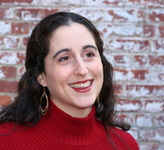
Inspired by a visit to Tucson, Arizona in the spring of 2006, I expressed my awe of the landscape, history, and people of this desert in a poem that would become the text for this piece. The title “Saguaro” is the name of the cactus described in the first stanza, as well as the national park in the Catalina mountains to which this cactus has given its name. These cacti are the kind seen in old Western movies, and they are often hundreds of years old. The seemingly endless expanses of this beautiful desert are reflected in the music’s evocation of space. Saguaro was commissioned by the Manhattan Choral Ensemble, as a result of my being a winner of their 2006 Commissioning Competition.
See more on Karen Siegel here.
Text of Saguaro
This cactus has been here longer
Than my family has been in this country.
Waiting.
Watching
The slow blooming of pink yellow white wildflowers,
The quick building of Marriot, No Tell Motel,
The invisible dying of Mexicans on foot.
Tell me,
Saguaro.
Do you remember when the ground was soft,
Before men and cattle trampled through?
Did the sunrise look the same then?
The rock bounces off your weathered skin.
Too weary to be annoyed,
Too strong to fall,
You maintain your post in a silent army,
Defending the Catalinas against time.
Watching.
Waiting.
~ Karen Siegel
See more on Karen Siegel here.
Text of Saguaro
This cactus has been here longer
Than my family has been in this country.
Waiting.
Watching
The slow blooming of pink yellow white wildflowers,
The quick building of Marriot, No Tell Motel,
The invisible dying of Mexicans on foot.
Tell me,
Saguaro.
Do you remember when the ground was soft,
Before men and cattle trampled through?
Did the sunrise look the same then?
The rock bounces off your weathered skin.
Too weary to be annoyed,
Too strong to fall,
You maintain your post in a silent army,
Defending the Catalinas against time.
Watching.
Waiting.
~ Karen Siegel
Without Words by Huang Ruo

Without Words is written for double a cappella choir in eight parts: Soprano I, Alto I, Tenor I, Bass I, and Soprano II, Alto II, Tenor II, Bass II, with four pairs of finger bells. The entire piece runs around six and a half minutes. The text is from a poem written by Li Hou Zhu, the last emperor of the Tang Dynasty.
See more on Huang here.
Text of Without Words
Wu Yan Du Without words, alone …
Shang Xi Lou, Walking up to the Western pavilion.
Yue Ru Gou. The moon is as a fading hook …
Ji Muo Wu Tong The Lonesome Wutong tree,
Shen Yuan In the deep courtyard,
Suo Qin Qiu. Enclosed with dismal Autumn
Jian Bu Duan, Unbreakable;
Li Hai Luan, Yet impossible to sort,
Shi Li Chou. Is this sorrow of leaving…
Bie Shi Yi Fan Deepening in my heart,
Zi Wei Zai Xin Tou An unspeakable feeling
~Li Hou Zhu (937-978) in the Tang Dynasty
See more on Huang here.
Text of Without Words
Wu Yan Du Without words, alone …
Shang Xi Lou, Walking up to the Western pavilion.
Yue Ru Gou. The moon is as a fading hook …
Ji Muo Wu Tong The Lonesome Wutong tree,
Shen Yuan In the deep courtyard,
Suo Qin Qiu. Enclosed with dismal Autumn
Jian Bu Duan, Unbreakable;
Li Hai Luan, Yet impossible to sort,
Shi Li Chou. Is this sorrow of leaving…
Bie Shi Yi Fan Deepening in my heart,
Zi Wei Zai Xin Tou An unspeakable feeling
~Li Hou Zhu (937-978) in the Tang Dynasty
Hee•oo•oom•ha by Toby Twining
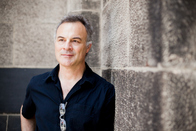
In 1987, the choreographer Melanie Bales asked me to compose a piece for her that used my voice. I had recently become taken with world vocal music, particularly that of the BaBenzele Pygmies and Mongolian throat singers. Further, I wanted to exploit the seemingly infinite variety of sounds possible for the human voice to achieve a range of orchestral color. These were the ideas that inspired Hee•oo•oom•ha, my first large work for unaccompanied voices, which set me on a lifelong creative path in choral music.
See more on Toby Twining here.
See more on Toby Twining here.
We Cannot Leave from Privilege by Ted Hearne

Privilege is a collection of five short pieces. We Cannot Leave is set to the translation of As’ Kwaz’ uKuhamba, a black South African Anti-Apartheid song, the original words of which are in Xhosa (the native language of Nelson Mandela). South Africa has a strong tradition of music being used as a tool to fight societal oppression and inequality. The setting is a tribute to that practice.
See more on Ted Hearne here.
Text of We Cannot Leave, Movement 5 from 'Privilege'
We cannot leave this land
of our ancestors on this earth.
We are being killed by the monster
on this earth.
I want to get on the train in the morning.
Oh mother, it’s leaving me behind.
~traditional Xhosa lyrics
translated by Patiswa Nombona and Mollie Stone
See more on Ted Hearne here.
Text of We Cannot Leave, Movement 5 from 'Privilege'
We cannot leave this land
of our ancestors on this earth.
We are being killed by the monster
on this earth.
I want to get on the train in the morning.
Oh mother, it’s leaving me behind.
~traditional Xhosa lyrics
translated by Patiswa Nombona and Mollie Stone
|
|
|
C4 is funded in part by:
C4 is a proud member of:
New York Choral Consortium |
Receive our newsletter:
Support C4's Mission!
|

